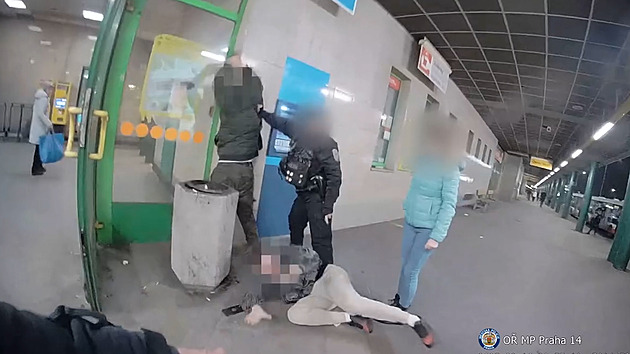Signs and Symptoms of Relational Aggression in Social Settings
Relational aggression is one of the most toxic behaviors. And while it’s widely regarded as a teen and tween problem, older adults aren’t immune from this form of social hostility. We’ve prepared a guide to relational aggression in social environments, focusing on the tell-tale signs that you or someone you know may be grappling with […] The post Signs and Symptoms of Relational Aggression in Social Settings appeared first on Entrepreneurship Life.

Relational aggression is one of the most toxic behaviors. And while it’s widely regarded as a teen and tween problem, older adults aren’t immune from this form of social hostility.
We’ve prepared a guide to relational aggression in social environments, focusing on the tell-tale signs that you or someone you know may be grappling with this aberrant social behavior.
Understanding Relational Aggression
Relational aggression refers to a nonphysical form of aggression designed to injure a person’s social status or reputation while attempting to elevate oneself. The behavior is also known as relational bullying or alternative aggression.
Relational aggression is typically targeted at a specific person. The aggressor may singe out their victims or attack them collectively as part of the peer groups they identify with.
Types of Relational Aggression
Alternative aggression can assume four different forms, namely;
1. Proactive Relational Aggression
Proactive relational aggression is one where aggressors pick their victims without undue provocation. The goal is usually coercion or intimidation.
This form of relational bullying is also known as premeditated or instrumental aggression.
2. Reactive Relational Aggression
Reactive relational aggression involves some form of provocation that elicits anger or impulsive reactions.
It usually occurs when a person is mistakenly convinced that they’re being ridiculed or belittled, causing them to get back at the alleged perpetrator.
3. Peer-directed Relational Aggression
This is a type of reactive alternative aggression that targets someone considered to belong in the same group as the perpetrator.
For instance, an ethnosupremacist person may readily dismiss an opinion given by a member of an ethnic group they deem inferior to theirs.
4. Romantic Relational Aggression
As the name implies, this form of relational bullying targets romantic partners.
A classic example is calling off an engagement because your spouse cannot afford a high-end engagement ring.
Signs of Relational Aggression
1. Exclusion
Almost all relational aggressors exhibit exclusionist tendencies. They’re happy to ostracize anyone purely based on a difference of opinion.
In most cases, the points of disagreement are embarrassingly trivial. However, such reasons may be overly hyped to make the ostracized person feel guilty about themselves and possibly beg to be readmitted into the aggressor’s cocoons.
2. Forming Cliques
Most relational aggressors are entitled individuals with elitist tendencies. One way they demonstrate their snobbishness is by forming cliques.
Members of these cliques often have to adhere to unrealistic rules set by the toxic elements in the group. They may be required to buy expensive outfits or go on funky dinners to fit in.
Depending on the depths of their depravity, they may engage in outright malevolent acts like physical bullying.
3. Conditional Friendships
Relational aggressors are fair-weather friends who don’t believe in symbiotic relationships. They’re exceptionally loyal when the odds are in their favor.
However, it only takes a subtle disagreement for someone with alternative aggression to become a vicious backstabber.
4. Silent Treatment
The silent treatment is another tell-tale sign of relational bullying. It occurs when someone deliberately withholds communication from another during a conflict.
People with relational aggression appreciate the significance of keeping in touch with their peers who may be undergoing a rough patch. When they willfully withdraw rather than offering emotional support, the only intention is to cause more anguish to the objects of their aggression.
5. Rumors
Relational aggressors delight in spreading baseless and malicious rumors. The goal is to portray their targets in a bad light so they can lose favor with their friends and peers.
In their rumor-mongering, some relational aggressors may blow a factual story out of proportion while others might concoct lies from scratch. Anything that drags their victims down in the court of public opinion would certainly give them the kicks.
6. Manipulation
Manipulation is one of the worst signs of relational aggression. That’s because it’s almost always premeditated.
Manipulative behavior may vary depending on the relationship between a relational aggressor and their victims.
Love bombing is a common manipulative tactic used in romantic relationships. It involves over-the-top displays of affection by a toxic partner in order to get their spouse to agree to something the other person would naturally object to.
In school settings, manipulative behavior may involve an aggressor threatening to break up with their best friends if they’re not allowed to copy assignments. Sadistic students may go as far as to use gaslighting, which is considered one of the most advanced manipulation techniques.
7. Cyberbullying
Cyberbullying is a scourge that needs a cure. Despite increased awareness, statistics still paint a grim picture.
YouTube and Snapchat were recently ranked among the social networking platforms where children are most likely to be cyber bullied. The fact that these websites are a safe haven for relational aggressors only worsens the situation.
Barely a day goes by without chancing on spiteful posts targeting innocent social media users.
8. Body Shaming
Making fun of other people based on their outward appearance is one of the worst sadistic behaviors. However, people with relational aggression are happy to ridicule others for how they look and the way they dress.
They will pick the tiniest flaws in their victims’ appearance or outfits and make a huge meal out of it. The idea is to demotivate the other person and make them feel utterly worthless.
The Bottom Line
Understanding the above-mentioned signs of relational aggression is the first step in addressing the condition. Remember to consult a professional behavioral therapist for help, whether you’re a victim or culprit of alternative aggression.
The post Signs and Symptoms of Relational Aggression in Social Settings appeared first on Entrepreneurship Life.
What's Your Reaction?



















































